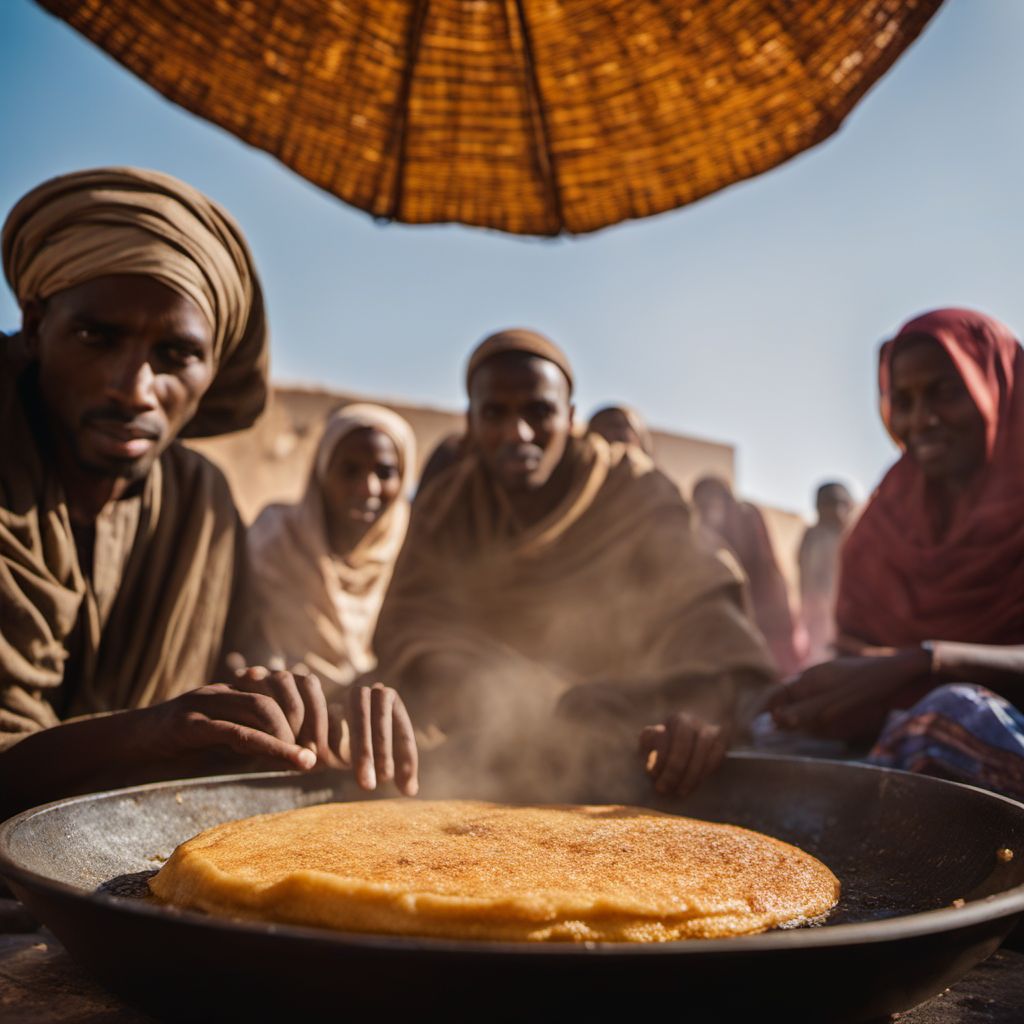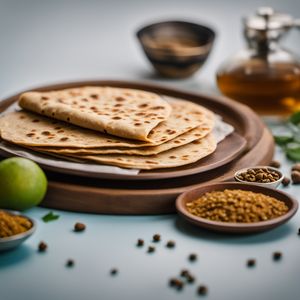
Dish
Lahoh
Lahoh has a spongy texture and a slightly sour taste that comes from the fermentation of the dough. It is a good source of carbohydrates and is low in fat and sugar. It is suitable for vegetarians and vegans, but may contain gluten.
Origins and history
Lahoh has been a staple food in Somalia for centuries, and is believed to have originated in the southern regions of the country. It is often served with traditional Somali dishes, such as goat stew, or as a snack on its own.
Dietary considerations
Lahoh is a good option for those who are looking for a low-fat, low-sugar bread. However, it is not suitable for those who are gluten intolerant or have celiac disease. It is also not recommended for people who are on a low-carbohydrate diet.
Variations
There are many variations of lahoh, depending on the region and the ingredients used. Some recipes call for the addition of spices, such as cumin or coriander, while others use different types of flour, such as sorghum or teff. Some versions are also flavored with herbs like parsley or cilantro.
Presentation and garnishing
Lahoh is typically served plain, but can be garnished with honey, ghee, or herbs like parsley or cilantro. It is often served warm, straight from the griddle.
Tips & Tricks
To get the best results when making lahoh, it is important to use high-quality ingredients and to allow the dough to ferment for at least a few hours. The batter should be thin and pourable, and the pancakes should be cooked on a hot griddle until they are golden brown.
Side-dishes
Lahoh is often served with a variety of toppings, such as honey, ghee, or jam. It can also be used as a wrap for sandwiches or as a base for pizza-like dishes.
Drink pairings
Lahoh pairs well with a variety of drinks, such as tea, coffee, or Somali-style chai. It is also a good accompaniment to traditional Somali drinks like camel milk or shaah.
Delicious Lahoh recipes
More dishes from this category... Browse all »

Abud
Arab cuisine

Aish baladi
Egyptian cuisine

Aish merahrah
Egyptian cuisine

Ajwain paratha
Indian cuisine

Aloo naan
Indian cuisine

Amdo balep
Tibetan cuisine

Amritsari kulcha
Indian cuisine

Anda paratha
Indian cuisine
More cuisines from this region... Browse all »

Burundian cuisine
Spicy, Savory, Sweet, Tangy, Aromatic

Djiboutian cuisine
Spicy, Savory, Sweet, Tangy, Aromatic

Eritrean cuisine
Spicy, Flavorful, Tangy, Sour, Savory

Ethiopian cuisine
Spicy, Flavorful, Tangy, Sour, Savory

Kenyan cuisine
Spicy, Flavorful, Tangy, Sour, Savory

Maasai cuisine
Savory, Meaty

Rwandan cuisine
Spicy, Savory, Sweet, Sour

South Sudanese cuisine
Spicy, Savory, Aromatic

